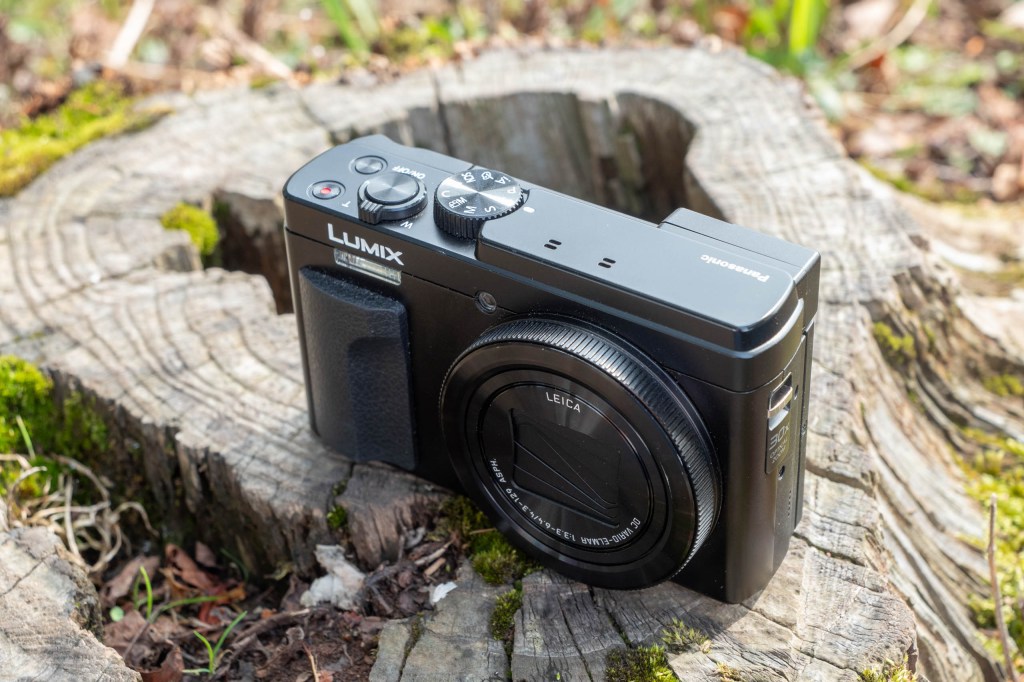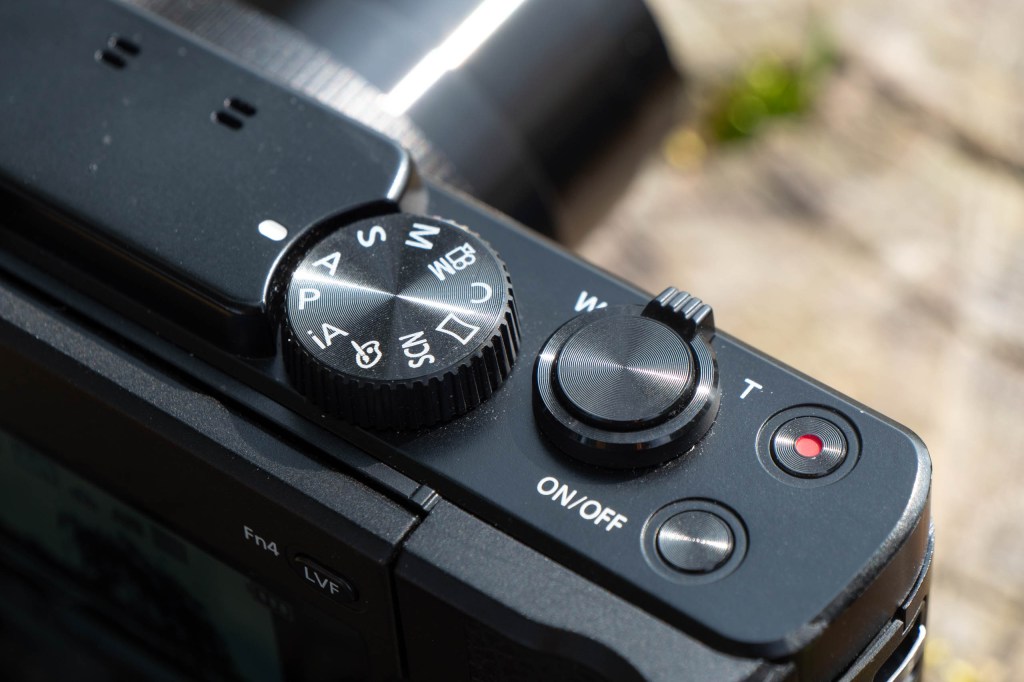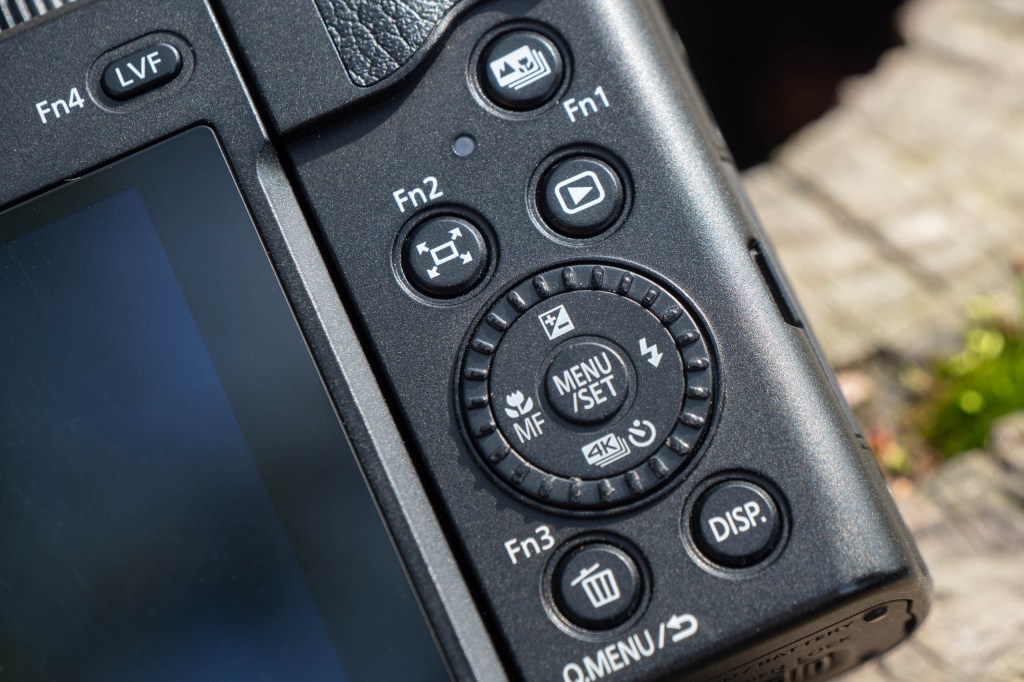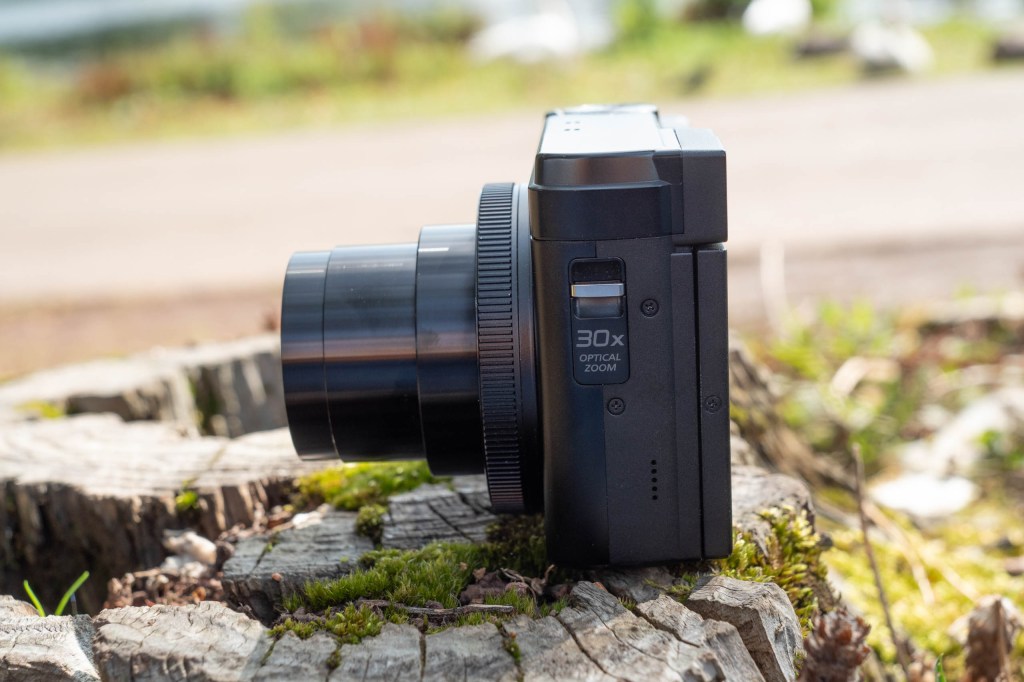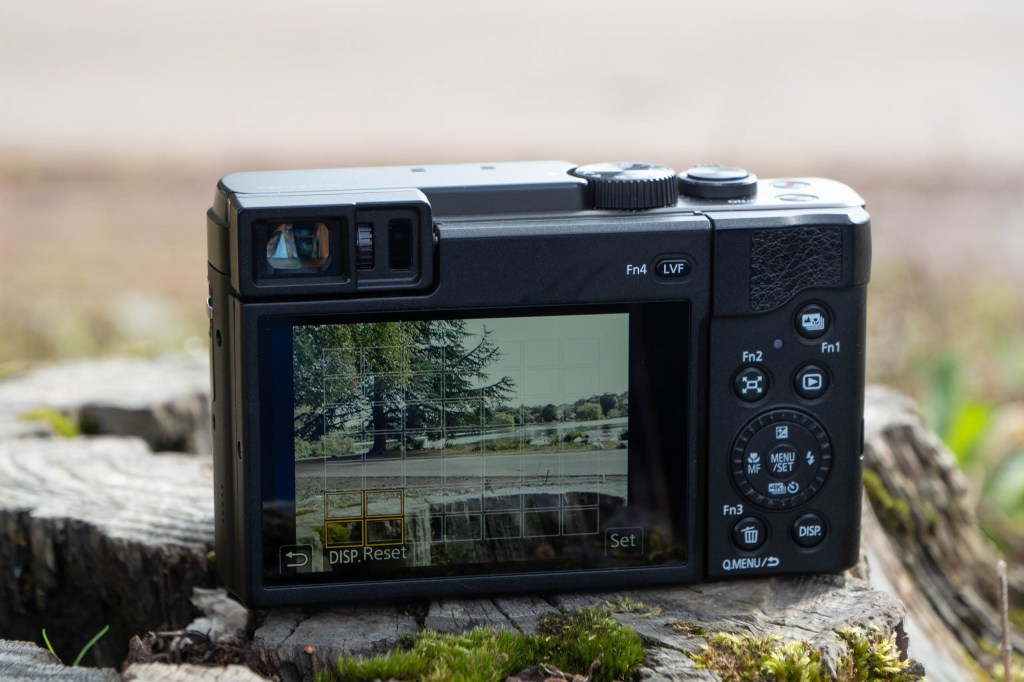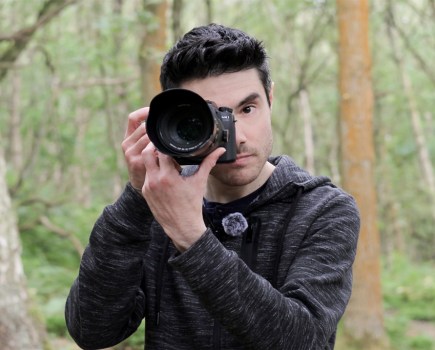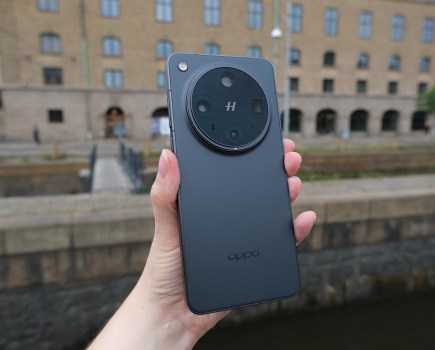Amateur Photographer verdict
If you’re particularly interested in a long zoom compact, then the Panasonic Lumix TZ95 gives you a 30x zoom in a pocketable device – just don’t rely on it for low light- 30x optical zoom
- Built in viewfinder
- Front facing screen for selfies
- Poor low light performance
- No USB-C
The Panasonic Lumix TZ95 was first announced in 2019, so in terms of camera tech, it’s quite old now – however it’s never been properly superseded, and there’s very little in the way of competition from the best compact cameras for something exactly like this.
Although there’s been a dying off of basic compact cameras, superzooms like the Panasonic Lumix TZ95 have remained popular thanks to their lengthy optical zooms, which is something we’re still yet to see implemented in even the best smartphones.
At a glance:
- Price as reviewed: £698-780
- 20.3MP 1/2.3-inch MOS sensor
- 24-720mm f/3.3-6.4 (35mm equivalent) 30x zoom LEICA DC Vario-Elmar lens
- Micro USB in-camera charging
- 4K/30p video recording
- 3-inch, 1040k-dot, touch-sensitive TFT LCD (1840k-dots for the TZ95D)
- 0.21-inch, 2330k-dot, 0.53x magnification electronic viewfinder
The Panasonic Lumix TZ95 includes a 30x optical zoom, so you should be able to get nice and close to your subjects, as well as giving you a good flexibility to shoot all manner of different subjects.
What’s the difference between the Panasonic Lumix TZ95 and the Lumix TZ95D?
In 2022, Panasonic introduced the TZ95D, which shares mostly exactly the same specifications as the TZ95, but has an improved screen. This review is looking at the TZ95, but since it uses the same sensor and lens combination as the TZ95D, it can also be considered to be a review of that camera.
For the TZ95D, there’s an 1840k-dot screen, compared to the TZ95’s 1040k-dot screen. That should mean that you get a more detailed viewing experience, but otherwise, the lens, the sensor, the viewfinder and other specifications remain the same.
Features
A 20MP 1/2.3-inch sensor sits at the heart of the TZ95. That’s pretty small by modern standards, with even several smartphones having bigger sensors these days. That’s likely to have an impact on things like low light shooting, but we’ll see how it fares further on in the review.
The 30x lens gives you a 35mm equivalent of 24mm – 720mm, with max apertures between f/3.3 and f/6.4. There’s also digital zoom available to get you up to 60x (1440mm equivalent).
Video recording reaches 4K, 30fps which should be more than enough for most users. A useful point about this camera is its front-facing screen, which may make it appealing for vloggers who can record directly to camera easily. It’s worth noting that this is a camera which has a 29 min 59 seconds recording limit for video as it was made before 2019 – even the 2022 TZ95D has the same limit, though.
You can charge in-camera, but as an older camera, you’ll find that you need a Micro USB cable (one is supplied in the box). Again, the same is true for the TZ95D from 2022.
Other useful features worth mentioning here include built-in Wi-Fi and Bluetooth for transferring your shots across to your smartphone, the ability to record in raw format, and Panasonic’s “4K Photo” options.
With 4K Photo, essentially, you record 4K video clips which you can then extract stills from. This can be useful when photographing unpredictable or fast-moving subjects, such as children or animals (or both!).
Build and Handling
If you want a compact camera that fits neatly into your pocket, then the TZ95/D should do the job fairly well. It’s narrower than even fairly small smartphones, though it is significantly chunkier – so if your pockets are particularly tight then it’s possible you will struggle to fit it in.
The camera has a sort of satisfying heft, with a rubberised grip on the front, accompanied by a smaller one on the back. I’d recommend attaching the supplied wrist strap when carrying it, but it sits naturally in your hand.
On the top of the camera, there’s a mode dial where you’ll find automatic, scene and filter modes, as well as the PASM modes you’ll find on higher-end mirrorless/ DSLR cameras – that means you can shoot fully manually with this camera if you want to. Also on top of the camera is the zoom rocker switch, which hugs the shutter button. There’s also a video record and an on/off button.
Flipping to the back of the camera, and all of the buttons here are found on the right hand side of the camera, with the left hand side taken up by the screen. Buttons here include the Menu button, a button for switching on macro focusing, and a scrolling dial which you can use to move through menus and your images in playback.
There’s a button for accessing 4K Photo, another for “Post Focus” (which uses 4K video recording to allow you to change focus after the fact), and a button for Zoom Frame Assist. Hold this button down when the lens is zoomed in, and it will zoom out momentarily. That’s helpful if the subject has left the frame and you need to quickly find it again. Releasing the button again will zoom the lens back to the position it started in.
Three of the buttons are customisable, so you can assign them to different functions. For example, say you never use Post Focus, you can set it to do something else.
Viewfinder and Screen
The screen on the model I was using (TZ95) has 1040k-dots, but it’s still fairly detailed – certainly enough for checking your shots and viewing them in playback. If you can therefore find a cheaper deal on the TZ95, I would advise taking it over the TZ95D – though sometimes you might find that the older model is inexplicably more expensive than the newer one.
There are a further two positives about the Panasonic Lumix TZ95’s screen. The fact that it is touch-sensitive means you can move through menus, set the focus point and flick through your photos in playback very easily.
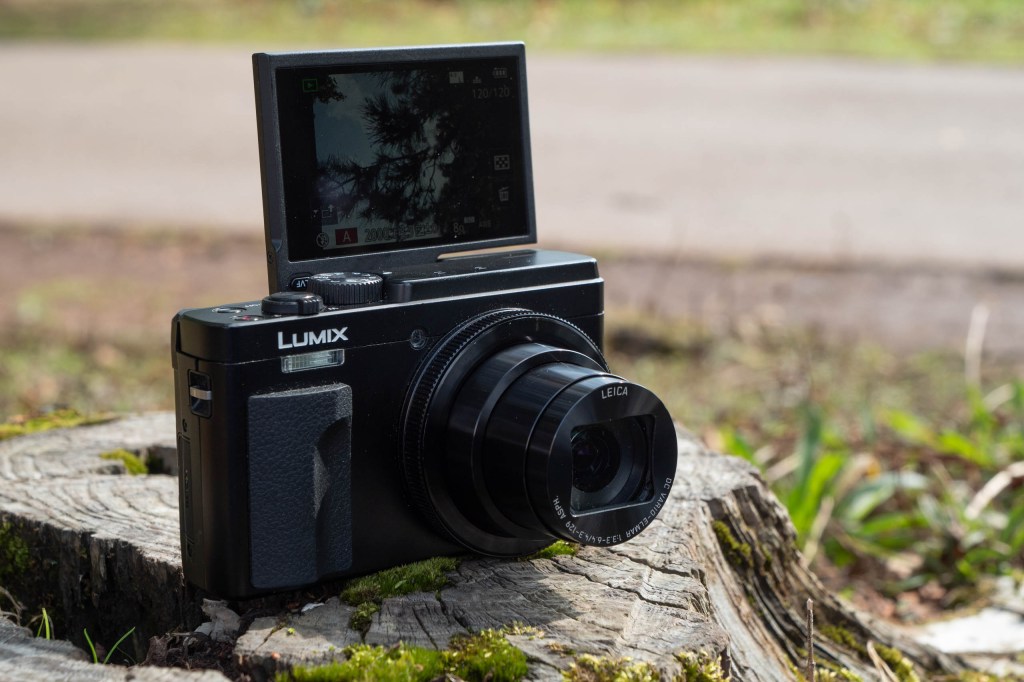
Secondly, being able to face it all the way forwards is useful for selfies, shooting from the hip, and recording video to camera. It doesn’t tilt downwards though, so if you want to shoot from overhead you’ll be out of luck – but that’s perhaps a rare occasion.
The viewfinder is small, but nevertheless useful to have on a compact camera. It comes in particularly handy if the light is bright and the screen is harder to see. But if you’re anything like me, you might simply prefer to compose via a viewfinder. The LVF has a sensor so it can tell when you’ve lifted it to your face to activate it, and turn it off again when you’ve removed it from your face. That makes for a nice seamless experience, but you can also switch off the automatic recognition, and use a button to switch it on and off too if you prefer.
You can continue to use the touchscreen while using the viewfinder to set things like focus point – which again makes for a nice seamless experience.
Image Quality and Performance
The overall convenience and flexibility of a camera like this means you should never expect to get the best possible image quality in the world.

That said, with a bit of patience and in good conditions, you can get some very nice shots with the Panasonic Lumix TZ95.
As we’d expect from something with a small sensor, the best results are seen in good light. Good also means it shouldn’t be too bright, as then you may have some issues with blown out highlights too. I was able to get some great shots around a lake with some wildlife, so it’s a good option for those that want to shoot subjects like that and find that their phone isn’t up to the job.


In good light, I’m quite pleased with the colours and detail, and there’s even some nice bokeh effects created when shooting at the long end of the zoom.
Speaking of the zoom, images from throughout the zoom range are pretty good, so long as you have some patience and keep yourself steady when shooting at longer focal lengths. There is 5-axis Hybrid OIS which helps a lot, but it still helps further if you can steady yourself as much as possible when shooting at 20x and beyond. I find it helpful to take multiple shots and hope that at least one will turn out as you want it.

Now for some bad news – low light. Again, the small sensor is a problem here, with a lack of detail and lots of noise. You can almost certainly expect better results from a smartphone which tend to use multi-shot processing to achieve a much better result.

Back to the better news – macro focusing works quite well, enabling you to get nice and close to a subject – again this could make it a good choice for macro photographers. In terms of the general focusing, while it’s not super quick, it’s not too bad so long as you’re photographing a relatively slow or predictable subject. I managed to get plenty of sharp images of geese, swans and ducks, but I wouldn’t fancy my chances against a cheetah – or maybe even my dog when she spots a crumb to snaffle at the other end of a field.
To that end, using 4K Photo can be a good bet, as you’re more likely to capture a moment in a video that you can extract.

The selfie mode works quite well, but again, I’d expect similar results from a smartphone – maybe even better in some cases – so I wouldn’t necessarily suggest it as a strong selling point of the camera.
Value for Money
At the time of writing, prices for the TZ95/TZ95D are quite high – even on the used market. This is likely because there’s a big demand for compact cameras right now, especially those that offer such a high zoom level – and there’s not many of them on the market.
That means that the TZ95/D will set you back anything up to about £800, which is quite a bit to pay for a compact camera, but if it’s something you really want, then it could be worth paying for.
If you’re in the market for a pocket-sized 30x zoom camera, your options will be extremely limited elsewhere, so in that sense it represents good value for money. However, if you consider that mid-ranged smartphones cost about the same price and offer other functionality too, then perhaps it isn’t – essentially it all depends what you want/need.
It’s worth keeping an eye on the price difference between the TZ95 and the TZ95D – if you can find the older TZ95 for a cheaper price, it’s definitely advisable to go for that one.
Verdict
The compact camera market is having a bit of a resurgence at the moment, with older models such as the Panasonic Lumix TZ95/D proving to be very popular – perhaps even more popular than when they were first released.
Although smartphones have generally taken over from basic point-and-shoots, models like the Lumix TZ95/D give you something you’ll never get from any existing phone – a huge zoom. Here, we’ve got 30x optical zoom in a device that you can still pretty much fit in your pocket.
Ideal for travel and wildlife, it gives you an enormous amount of flexibility for such a (relatively) small camera. That said, the conditions have to be pretty good. The light needs to be bright, but not too bright, and if you’re working in low light, you’ll almost certainly be better off with the average smartphone.
Then there’s also the price issue. With the TZ95/D being in such high demand at the moment, I’m seeing very high prices, even on the second-hand market, where they’re selling for up to £800. That’s a high price to pay for something like this, but, the competition is scarce and supply is limited, so it makes perfect sense. In essence, if you really want a travel zoom, this is the price you might need to be prepared to go up to.
You can find cheaper options if you shop around, and if you’re happy to take a risk on sites such as eBay, you might also find some cheaper bargains – you just won’t get the same guarantee you’d get from other resellers, so as always, buyer beware.
Overall, the TZ95/D is a good option if you want something exactly like it, so long as you’re prepared to pay for it.

Follow AP on Facebook, Twitter, Instagram, YouTube and TikTok.





